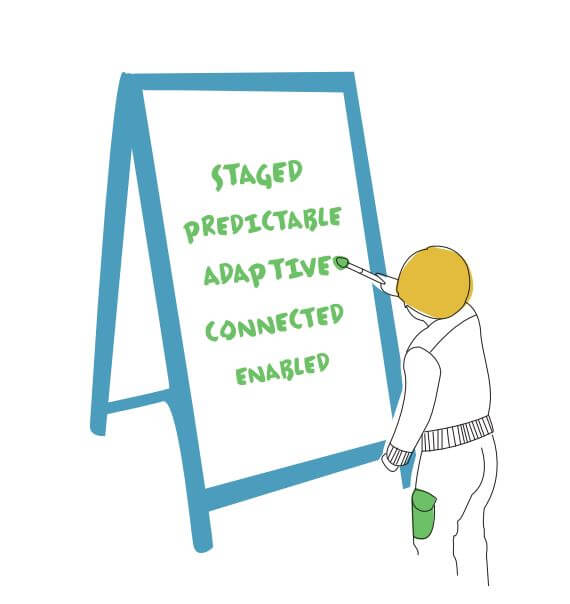
Permission to Nurture
In the main, teachers are an optimistic bunch. Most of us become teachers because we believe that what we do makes a difference in the lives of children and young people. We know intuitively or through experience that education is a double-sided coin in which nurturing and learning are an integral process. We also know learning is profoundly relational and proceeds from a place of trust. So from the moment we commence our careers we begin to amass a toolkit of skills and strategies to build connections and engage children and young people in learning. Our hope is that as we go along and dip into our toolkit they will discover the resources to assist them to learn and flourish.
However, amid this privileged exchange, most, if not all of us, will encounter a child or young person with whom we have emptied our toolkit trying to connect and engage and nothing has worked. Frequently, this situation will pan out in one of two ways – both unhelpful, both difficult to come back from. Either the teacher comes to hate the child or young person and emotionally withdraws or they blame themselves and conclude that they are a lousy teacher unsuited to the profession.
For the Behaviour Consultants in Catholic Education South Australia (CESA) this was a scenario we were increasingly encountering. In assisting teachers to support children and young people struggling with being in school and learning, we were faced with a choice. We could continue to work alongside individual teachers and offer strategies to Band-Aid such situations. The problem with this approach is that we know Band-Aids cannot fix the emotional turmoil of an injured brain. Alternatively, we could look to deeply understand what sits are the centre of the dysregulated, defiant and/or disengaged behaviour that some children and young people were exhibiting. We chose the latter and so began an ongoing partnership with the Australian Childhood Foundation (ACF).
The cornerstone of this partnership is the Making SPACE for Learning training. This training brings teachers into the world of normative brain development in children and young people, the nature and effects of developmental trauma on brain development and strategies to respond to trauma-consistent behaviour. More significantly, the training allows teachers to re-frame what is occurring in the dysregulated, defiant, or disengaged behaviour of children and young people and come to a different assessment of the child, young person or themselves. Indeed, more than that, it transforms the nature of their interaction with these children and young people. Simply put, teachers think and feel differently about the child or young person. This facilitates an emotional connection with the child or young person, which in turn, opens up a space for engagement.
While understanding trauma and trauma-consistent behaviour is foundational in recognising that a different response is required, knowing how to respond is essential. Time to replenish the toolkit. Another of the treasures of the Making SPACE for Learning training is that it does not put forward a program that is in addition to the usual learning routine of the classroom. Rather, it champions response strategies that aim to meet the emotional, relational and educational needs of children and young people exhibiting trauma-consistent behaviour. These are grounded in research, good pedagogy and therefore good for all children and young people. In essence they promote a shift from management strategies to engagement strategies. Sticking with the toolkit analogy, the training is like a trip to Bunnings!
CESA is currently in its third iteration of a project structured around Making SPACE for Learning and ActionResearch. Knowledge is a powerful thing and the learning from the Making SPACE for Learning training assists teachers to understand that the inappropriate behaviour of children and young people exhibiting trauma-consistent behaviour may stem from a brain injury arising from developmental trauma and is an emotional reaction, not chosen behaviour. Gently and powerfully, this moves teachers from judgment to understanding. As these projects unfold, I notice teachers talking about moving in, not away and I see a resolve to be in relationship. I see teachers less distressed and more equipped. I recognise a rediscovery of the joy in the art of teaching and learning.
ActionResearch. Knowledge is a powerful thing and the learning from the Making SPACE for Learning training assists teachers to understand that the inappropriate behaviour of children and young people exhibiting trauma-consistent behaviour may stem from a brain injury arising from developmental trauma and is an emotional reaction, not chosen behaviour. Gently and powerfully, this moves teachers from judgment to understanding. As these projects unfold, I notice teachers talking about moving in, not away and I see a resolve to be in relationship. I see teachers less distressed and more equipped. I recognise a rediscovery of the joy in the art of teaching and learning.
Recently, I was visiting the current round of schools participating in the project. At one school, a Year 4 teacher described a scene in her classroom where amid the learning one child might be regulating his/herself by playing in kinetic sand while another was asleep on the couch. Of this scene, she observed that while she intuitively knew it to be right, the Making SPACE for Learning training and research project had given her the justification for doing what she knew to be right. For me, it was nothing short of being given back the permission to nurture.
